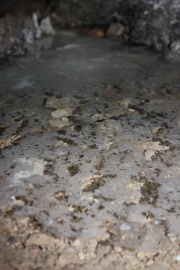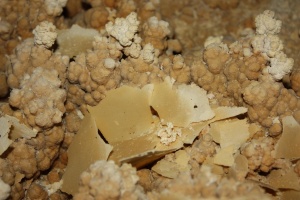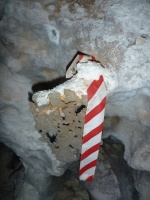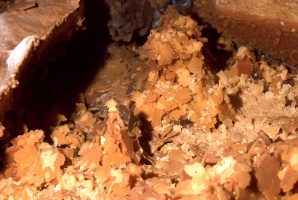Calcite (Inventory)/Raft
From LagWiki
(Add an image) |
|||
| (4 intermediate revisions not shown) | |||
| Line 20: | Line 20: | ||
*Palmer, Arthur N. (2007) ''Cave Geology'' CAVE BOOKS, Dayton, OH pp 278-279 ISBN-13: [[Special:Booksources/978-0-939748-66-2|978-0-939748-66-2]], ISBN-10: [[Special:Booksources/0-939748-66-5|0-939748-66-5]] | *Palmer, Arthur N. (2007) ''Cave Geology'' CAVE BOOKS, Dayton, OH pp 278-279 ISBN-13: [[Special:Booksources/978-0-939748-66-2|978-0-939748-66-2]], ISBN-10: [[Special:Booksources/0-939748-66-5|0-939748-66-5]] | ||
*Hill, Carol; Paolo Forti (1997) ''Cave Minerals of the World (Second Edition ed.)'' National Speleological Society p 88 ISBN: [[Special:Booksources/1-879961-07-5|1-879961-07-5]] | *Hill, Carol; Paolo Forti (1997) ''Cave Minerals of the World (Second Edition ed.)'' National Speleological Society p 88 ISBN: [[Special:Booksources/1-879961-07-5|1-879961-07-5]] | ||
| + | |||
| + | ==Raft, Calcite== | ||
| + | <gallery perrow=2 widths=300px heights=200px> | ||
| + | File:Calcite rafts in a dry pool.JPG|Calcite rafts in a dry pool | ||
| + | File:Raft.JPG|Raft in an unusual place | ||
| + | File:Raft Hoodoos.jpg|Loose pile of rafts | ||
| + | </gallery> | ||
{{Cave inventory}} | {{Cave inventory}} | ||
Current revision as of 22:19, 1 June 2014

The Raft field of the Calcite section is used to record stations where calcite cave rafts are observed.
Cave rafts are thin accumulations of calcite or aragonite or more rarely gypsum that form on the surface of cave pools. Only calcite or aragonite cave rafts should be recorded in this field. Gypsum rafts have their own field.
Cave rafts form as extremely thin accumulations of crystals floating on the surface of a pool only because of surface tension. They form on still water. As they grow, they grow downward becoming thicker until they are too massive to float or are disturbed in which case they sink to the bottom of the pool. If sinking cave rafts accumulate in the same place (because of dripping water, for example), they may pile up into what is known as a raft cone.
Cave rafts may be observed: on the surface of pools; under water on the bottom of a pool; or lying along the bottom of a former pool. Cave rafts on the surface of a pool may be very thin looking like a film of powder or dust on the water. Cave rafts are usually white, yellowish or brown in color and look like ice or very thin lily pads. They may be touching the edge of a pool or floating freely but are incapable of supporting their own weight should the pool drop, unlike shelfstone. The top sides of cave rafts are flat and may be smooth or glossy. The bottom sides are rough. The shape may be very irregular and may even have holes in it like lace.
Rafts usually do not exceed 15 cm in diameter and 1 mm in thickness (about the thickness of a piece of paper). If the rafts are in a dried pool, they may have become cemented to the floor or could still be loose.
Look for cave rafts in every pool encountered no matter its size. Also look for them on the bottom of pools or former pools.
See also
References
- Palmer, Arthur N. (2007) Cave Geology CAVE BOOKS, Dayton, OH pp 278-279 ISBN-13: 978-0-939748-66-2, ISBN-10: 0-939748-66-5
- Hill, Carol; Paolo Forti (1997) Cave Minerals of the World (Second Edition ed.) National Speleological Society p 88 ISBN: 1-879961-07-5
Raft, Calcite



